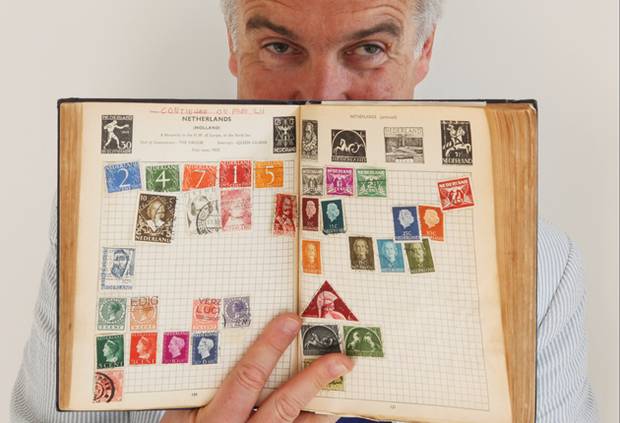


“I looked at it under a magnifying glass and was like, ‘Wow, this is the value of a house!’” Cottriall recalled. One hundred examples slipped through the printers, each worth at least $100,000 today, depending on condition.

It looks like your average classic stamp until you realise the plane, or Jenny, was printed upside down. The most prized stamp Cottriall has ever encountered is the inverted Jenny, an American stamp from 1918 depicting a blue old-fashioned biplane surrounded by a red vintage border. Sometimes, the piece of mail a stamp is fastened to - perhaps a letter displaying traces of war history - can raise the price by a few hundred dollars. Some of the world’s most coveted examples are the result of printing errors (like the British television stamp without the queen’s head), but others may have become scarce due to political or historic circumstances. When deciding how much you’re willing to spend, first determine how rare the stamp is. The catalogue price is the amount listed in industry-respected publications by the likes of Stanley Gibbons in London, Scott in the US, Michel for the German-speaking world and Yvert et Tellier in France. While there’s no firm rule on pricing, collectors buying at auctions should expect to pay 40% to 50% of the catalogue price, said Joseph Cottriall, who works as a stamp valuer for Warwick & Warwick in the UK, and a consultant to Sotheby’s in the US. You get what you pay for when it comes to rare stamps. You buy stamps because you want to enjoy looking at them.” “Some of course are turned upside down and you realise this one has grilled gum on the back from Czechoslovakia! Stamp collecting is very much an aesthetic hobby. “You have a pile of stamps, and you start arranging them by country,” Savastano said. Like most stamp experts, Savastano started collecting as a young boy in England and quickly grew intrigued by the process of finding and sorting miniature works of art from places near and far. “With knowledge you can beat the dealers,” he said. This way stamps become a vehicle for learning about a broader subject in all its nuances, said Dominic Savastano, a stamp specialist at Spink London. “Collecting should be a pleasure and if you eventually make money, that’s a bonus.”Īny philatelist (the official name for stamp researchers and collectors) will tell you this: build your collection around a focus that interests you, whether it’s cars or birds or your family’s country of origin. “You learn a lot about the world in an effortless but pleasant way,” said retired dealer Anthony Grainger. Though numerous collectors have deep pockets and decades of knowledge, anyone can become a rare stamp aficionado.Īnd even if you aren't as lucky as the Rochdale collector, you can quickly become knowledgeable about a range of topics and geographic locations as you build a stamp collection. The sum was $9.5m, nearly a billion times its original penny value. In 2014, the one-cent magenta - an unassuming magenta octagon with handwritten black script released in British Guiana in 1856 - set the record for the most money ever paid for a postage stamp. Billions of stamps have been issued since the British Penny Black, the world’s first adhesive stamp, debuted in 1840, and many are laced with romance and lore - transporting collectors to exotic destinations, critical moments in history and, for some, elusive future fortunes. In 2014, he sold the stamp, known as SG 755b, at auction for £23,600 ($36,260).Īlthough the advent of email has hurt postal mail service in recent years, stamp collecting remains a passionate hobby as well as a valuable business and investment strategy in many countries. What he didn’t realise until later was that one of the stamps was missing the queen’s head. He paid one shilling and nine pence (less than 10 US cents) for a pair that celebrated the invention of the television and featured a silhouette of Queen Elizabeth II. In 1967, a stamp enthusiast went to his local post office in the north England town of Rochdale to buy a pair of Great Britain stamps. A simple trip to a British post office turned into a life-changing adventure for one lucky stamp collector.


 0 kommentar(er)
0 kommentar(er)
